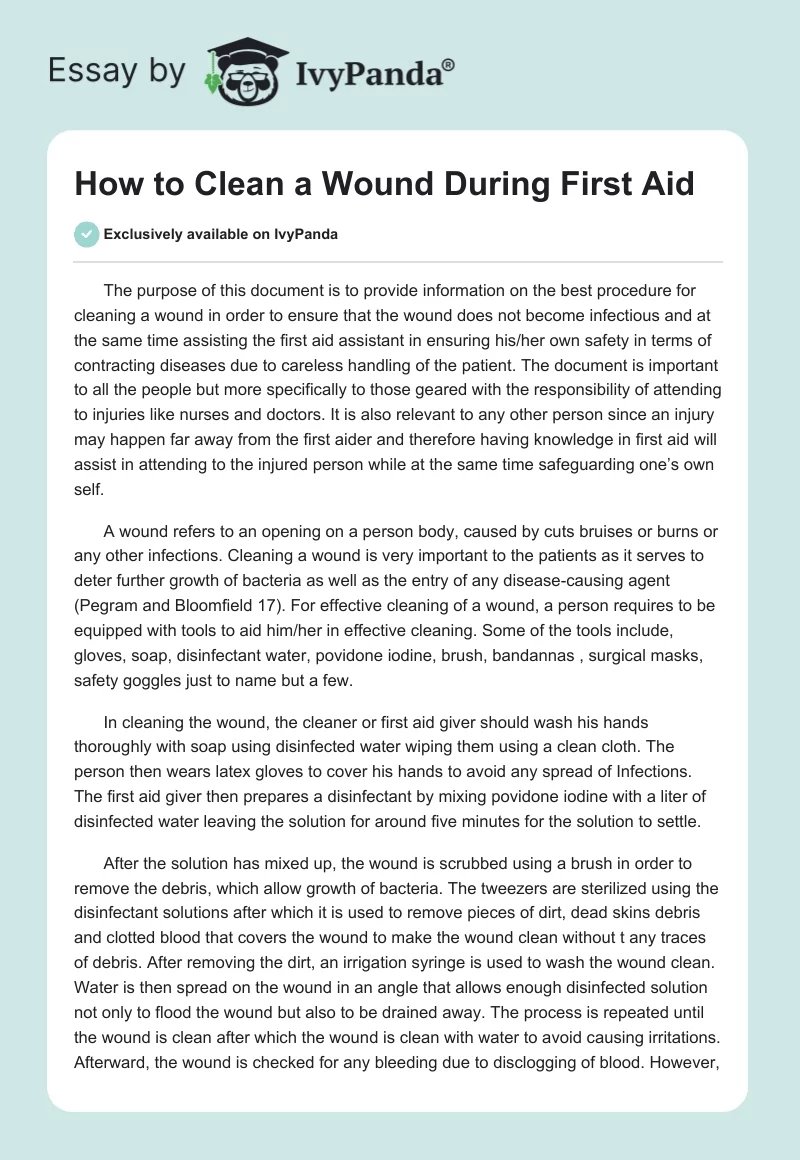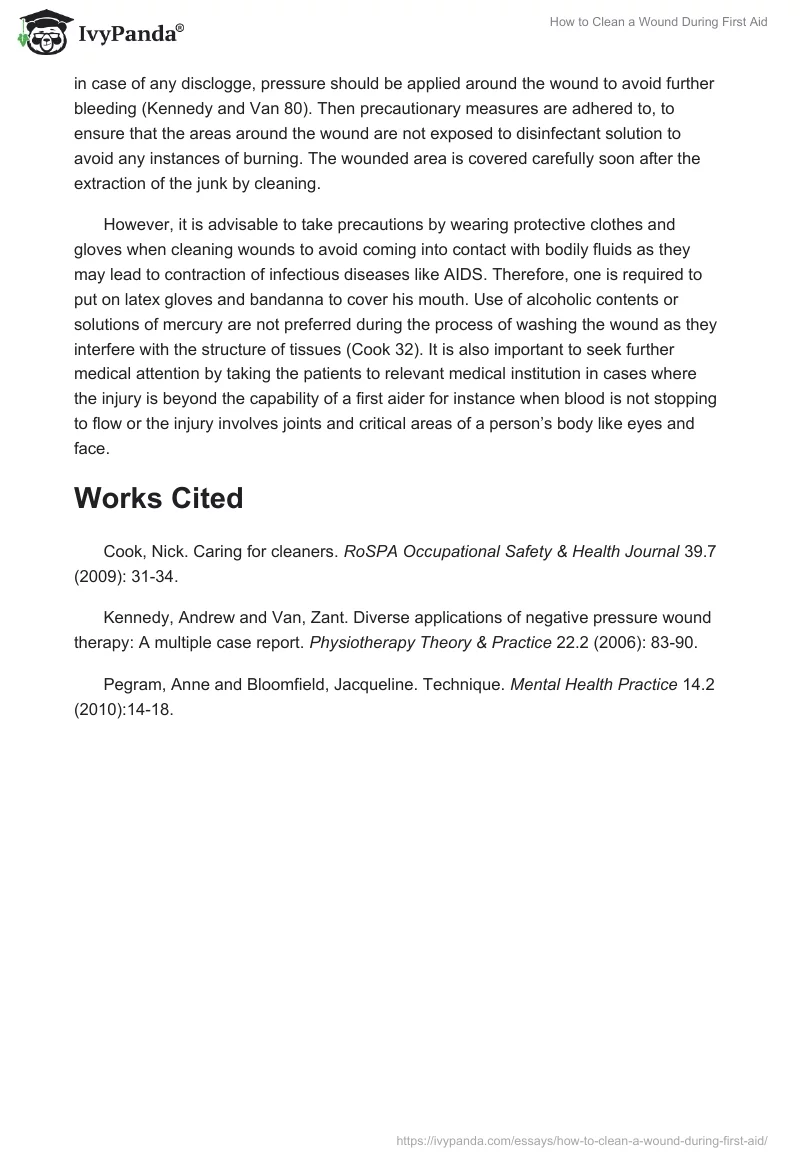The purpose of this document is to provide information on the best procedure for cleaning a wound in order to ensure that the wound does not become infectious and at the same time assisting the first aid assistant in ensuring his/her own safety in terms of contracting diseases due to careless handling of the patient. The document is important to all the people but more specifically to those geared with the responsibility of attending to injuries like nurses and doctors. It is also relevant to any other person since an injury may happen far away from the first aider and therefore having knowledge in first aid will assist in attending to the injured person while at the same time safeguarding one’s own self.
A wound refers to an opening on a person body, caused by cuts bruises or burns or any other infections. Cleaning a wound is very important to the patients as it serves to deter further growth of bacteria as well as the entry of any disease-causing agent (Pegram and Bloomfield 17). For effective cleaning of a wound, a person requires to be equipped with tools to aid him/her in effective cleaning. Some of the tools include, gloves, soap, disinfectant water, povidone iodine, brush, bandannas , surgical masks, safety goggles just to name but a few.
In cleaning the wound, the cleaner or first aid giver should wash his hands thoroughly with soap using disinfected water wiping them using a clean cloth. The person then wears latex gloves to cover his hands to avoid any spread of Infections. The first aid giver then prepares a disinfectant by mixing povidone iodine with a liter of disinfected water leaving the solution for around five minutes for the solution to settle.
After the solution has mixed up, the wound is scrubbed using a brush in order to remove the debris, which allow growth of bacteria. The tweezers are sterilized using the disinfectant solutions after which it is used to remove pieces of dirt, dead skins debris and clotted blood that covers the wound to make the wound clean without t any traces of debris. After removing the dirt, an irrigation syringe is used to wash the wound clean. Water is then spread on the wound in an angle that allows enough disinfected solution not only to flood the wound but also to be drained away. The process is repeated until the wound is clean after which the wound is clean with water to avoid causing irritations. Afterward, the wound is checked for any bleeding due to disclogging of blood. However, in case of any disclogge, pressure should be applied around the wound to avoid further bleeding (Kennedy and Van 80). Then precautionary measures are adhered to, to ensure that the areas around the wound are not exposed to disinfectant solution to avoid any instances of burning. The wounded area is covered carefully soon after the extraction of the junk by cleaning.
However, it is advisable to take precautions by wearing protective clothes and gloves when cleaning wounds to avoid coming into contact with bodily fluids as they may lead to contraction of infectious diseases like AIDS. Therefore, one is required to put on latex gloves and bandanna to cover his mouth. Use of alcoholic contents or solutions of mercury are not preferred during the process of washing the wound as they interfere with the structure of tissues (Cook 32). It is also important to seek further medical attention by taking the patients to relevant medical institution in cases where the injury is beyond the capability of a first aider for instance when blood is not stopping to flow or the injury involves joints and critical areas of a person’s body like eyes and face.
Works Cited
Cook, Nick. Caring for cleaners. RoSPA Occupational Safety & Health Journal 39.7 (2009): 31-34.
Kennedy, Andrew and Van, Zant. Diverse applications of negative pressure wound therapy: A multiple case report. Physiotherapy Theory & Practice 22.2 (2006): 83-90.
Pegram, Anne and Bloomfield, Jacqueline. Technique. Mental Health Practice 14.2 (2010):14-18.


